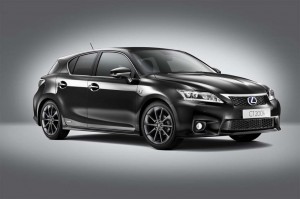A new generation of low-cost luxury cars from manufacturers like Mercedes-Benz and Audi have clearly clicked with consumers, generating a flood of new buyers, many of them entering the upscale market for the first time.
But despite that growth in demand, don’t expect to see a sub-$30,000 car coming from Lexus, the highline division of Toyota Motor Co., says the brand’s global chief executive.
Describing products like the Mercedes CLA and Audi A3 as “cheap luxury,” Lexus International boss Mark Templin told Automotive News that for his money, “You can’t build a Lexus with the quality, the durability the reliability, the craftsmanship, the content that we put in a Lexus and sell it profitability under $30,000. You just can’t do it.”
Not that Lexus doesn’t come close. It currently offers a gas-electric hybrid, the CT200h, at $32,050. But that’s more than $2,000 higher than the new entry-luxury offerings from both Mercedes and BMW.
And the reality is that the price gap isn’t even that great in practice. It’s extremely rare that a Mercedes CLA rolls off the dealer lot, after working in options, for much less than $35,000, according to industry sales data. That’s much closer to the average transaction of the Lexus CT200h – both base cars, though they are not considered direct competitors.
(Click Here for details on the increased role of the F Sport for Lexus.)
Lexus has been struggling to regain momentum in recent years after leading the U.S. luxury market for much of the previous decade, then ceding the sales crown to Mercedes and BMW.
Part of the challenge for the Toyota subsidiary is that its German rivals have launched a flood of new products, Mercedes planning to unleash 30 all-new or significantly redesigned models by 2017, according to Steve Cannon, head of Mercedes-Benz USA. And a number of those are targeting first-time buyers who want a luxury badge at a mainstream price.
The $29,900 CLA coupe-like sedan has become the fastest-growing model in Mercedes history and the maker is about to launch the only slightly more expensive GLA crossover later this year. Audi, meanwhile, is bringing to market a new version of its A3 line, also starting under $30,000. Already available in Europe and other markets, it has matched the meteoric launch of the Mercedes CLA line.
(Lexus goes turbo with new NX compact crossover. Click Here for a look.)
Both makers are expected to add still more low-end offerings. Mercedes’ parent Daimler AG recently announced plans to enter a joint venture with Nissan to build a factory in Mexico that will produce several new small, low-priced models for both Mercedes and the Japanese maker’s own luxury line, Infiniti.
Though some have criticized the CLA for not offering quite the level of refinement of other, more expensive models, Cannon told TheDetroitBureau.com, “This is a true Mercedes-Benz.” And he dismissed the claims by Lexus boss Templin that you can’t build a real luxury car for under $30,000.
If anything, he said, makers like Mercedes have to go into that niche if they hope to win over young, first-time buyers who will be the life-blood of the brand going forward.
Whether this blitz of low-end offerings will hurt Lexus remains to be seen. The maker has other issues to deal with, including a general perception that its products are too bland. It has launched a push to put more “passion” into its offerings, a drive symbolized by the more polarizing spindle grille design it has adopted, as well as the more powerful engines being offered in many Lexus models.
(Mercedes turns shoppers into customers better than any other brand, says study. Click Here for a closer look.)
It is also introducing new, sportier models dubbed F, and F-Sport, including a high-performance version of the new RC Coupe. This strategy has sharply driven down the age of Lexus buyers, officials note. Lexus has largely been a Baby Boom brand, analysts note, and needs to attract Millennials and Gen Xers to grow.
If it won’t do that by low-balling its price, they add, it will have to find other ways to compete with the new German entries.


